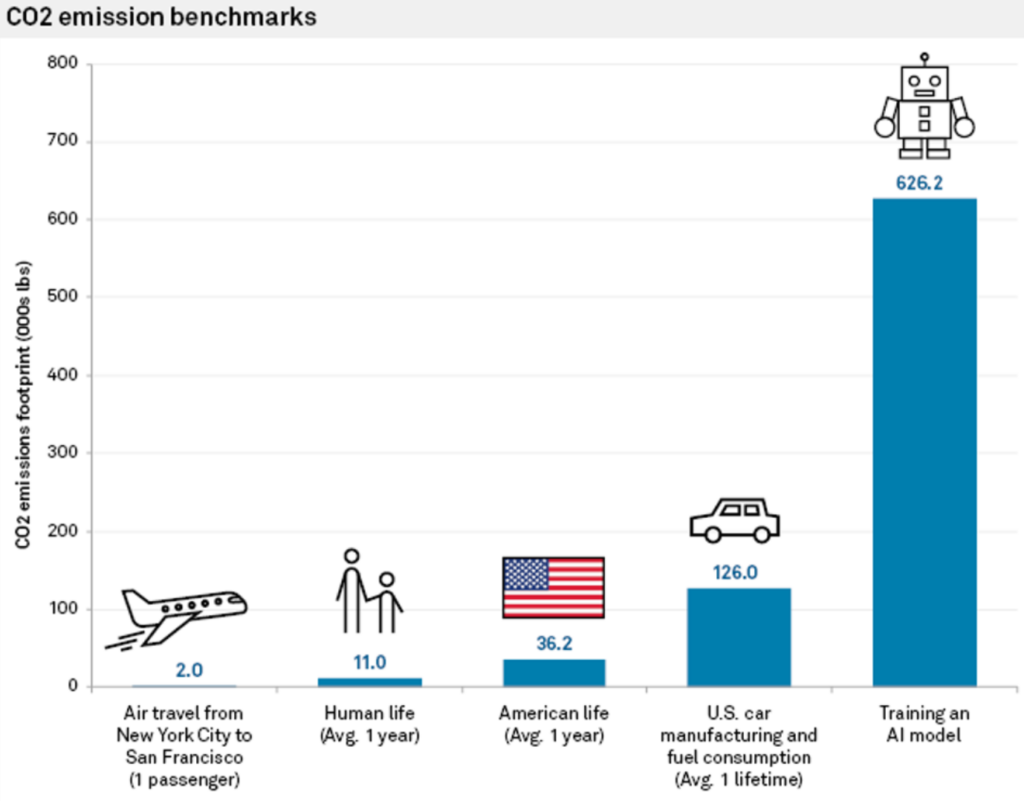Google’s Search Engine Experience (SGE) threatens to scale AI’s environmental impacts
Google’s latest flagship I/O conference saw the company double down on its Search Generative Experience (SGE) – which will embed generative AI into Google Search. SGE, which aims to bring AI-generated answers to over a billion users by the end of 2024, relies on Gemini, Google’s family of large language models (LLMs), to generate human-like responses to search queries. Instead of a traditional Google search, which primarily displays links, you’ll be presented with an AI-generated summary of results, essentially summarising the answer to your query. This “AI Overview” has been criticized for providing nonsense information, and Google is fast working The post Google’s Search Engine Experience (SGE) threatens to scale AI’s environmental impacts appeared first on DailyAI.

Google’s latest flagship I/O conference saw the company double down on its Search Generative Experience (SGE) – which will embed generative AI into Google Search.
SGE, which aims to bring AI-generated answers to over a billion users by the end of 2024, relies on Gemini, Google’s family of large language models (LLMs), to generate human-like responses to search queries.
Instead of a traditional Google search, which primarily displays links, you’ll be presented with an AI-generated summary of results, essentially summarising the answer to your query.
This “AI Overview” has been criticized for providing nonsense information, and Google is fast working on solutions before it begins mass rollout.
But aside from recommending adding glue on pizza and saying pythons are mammals, there’s another bugbear with Google’s new AI-driven search strategy: its environmental footprint.
While traditional search engines simply retrieve existing information from the internet, generative AI systems like SGE must create entirely new content for each query. This process requires vastly more computational power and energy than conventional search methods.
Billions of Google searches are conducted daily, between 3 and 10 billion, according to most estimates. The impacts of applying AI to even a small percentage could be incredible.
Sasha Luccioni, a researcher at the AI company Hugging Face who studies the environmental impact of these technologies, recently discussed the sharp increase in energy consumption SGE might trigger.
Luccioni and her team estimate that generating search information with AI could require 30 times as much energy as a conventional search.
“It just makes sense, right? While a mundane search query finds existing data from the Internet, applications like AI Overviews must create entirely new information,” she told Scientific American.
In 2023, Luccioni and her colleagues found that training the LLM BLOOM emitted greenhouse gases equivalent to 19 kilograms of CO2 per day of use, or the amount generated by driving 49 miles in an average gas-powered car. They also found that generating just two images using AI can consume as much energy as fully charging an average smartphone.
Previous studies have also assessed the CO2 emissions related to AI model training, which might exceed the emissions of hundreds of commercial flights or the average car across its lifetime.

In an interview with Reuters last year, John Hennessy, chair of Google’s parent company, Alphabet, himself admitted to the increased costs associated with AI-powered search.
“An exchange with a large language model could cost ten times more than a traditional search,” he stated, although he predicted costs to decrease as the models are fine-tuned.
AI search’s strain on infrastructure and resources
Data centers housing AI servers are projected to double their energy consumption by 2026, potentially using as much power as a small country.
With chip manufacturers like NVIDIA rolling out bigger, more powerful chips, it could soon take the equivalent of multiple nuclear power stations to run large-scale AI workloads.
When AI companies respond to questions about how this can be sustained, they typically quote renewables’ increased efficiency and capacity and improved power efficiency of AI hardware.
However, the transition to renewable energy sources for data centers is proving to be slow and complex.
As Shaolei Ren, a computer engineer at the University of California, Riverside, who studies sustainable AI, explained, “There’s a supply and demand mismatch for renewable energy. The intermittent nature of renewable energy production often fails to match the constant, stable power required by data centers.”
As a result of this mismatch, fossil fuel plants are being kept online longer than planned in areas with high concentrations of tech infrastructure.
Innovations in energy-efficient AI hardware are positively impacting AI’s energy footprint, with companies like NVIDIA and Delta making huge strides in reducing their hardware’s energy footprint.
Rama Ramakrishnan, an MIT Sloan School of Management professor, explained that while the number of searches going through LLMs is likely to increase, the cost per query seems to decrease as companies work to make hardware and software more efficient.
But will that be enough to offset increasing energy demands? “It’s difficult to predict,” Ramakrishnan says. “My guess is that it’s probably going to go up, but it’s probably not going to go up dramatically.”
As the AI race heats up, mitigating environmental impacts has become necessary. Necessity is the mother of invention; the pressure is on tech companies to create solutions to keep AI’s momentum rolling.
SGE could strain water supplies, too
We can also speculate about the water demands created by SGE, which will likely mirror increases in data center water consumption attributed to the generative AI industry.
According to recent Microsoft environmental reports, water consumption has rocketed by up to 50% in some regions, with the Las Vegas data center water consumption doubling. Google’s reports also registered a 20% increase in data center water expenditure in 2023 compared to 2022.
Shaolei Ren, a researcher at the University of California, Riverside, attributes the majority of this growth to AI, stating, “It’s fair to say the majority of the growth is due to AI, including Microsoft’s heavy investment in generative AI and partnership with OpenAI.”
Ren estimated that each interaction with ChatGPT, consisting of 5 to 50 prompts, consumes a staggering 500ml of water.
In a paper published in 2023, Ren’s team wrote, “The global AI demand may be accountable for 4.2 – 6.6 billion cubic meters of water withdrawal in 2027, which is more than the total annual water withdrawal of 4 – 6 Denmark or half of the United Kingdom.”
Using Ren’s research, we can create some napkin calculations for how Google’s SGE might factor into these predictions.
Let’s say Google processes an average of 8.5 billion daily searches worldwide. Assuming that even a fraction of these searches, say 10%, utilize SGE and generate AI-powered responses with an average of 50 words per response, the water consumption could be phenomenal.
Using Ren’s estimate of 500 milliliters of water per 5 to 50 prompts, we can roughly calculate that 850 million SGE-powered searches (10% of Google’s daily searches) would consume approximately 85 billion milliliters or 85 million liters of water daily.
This is equivalent to the daily water consumption of a city with a population of over 500,000 people every day.
In reality, actual water consumption may vary depending on factors such as the efficiency of Google’s data centers and the specific implementation and scale of SGE.
Nevertheless, it’s very reasonable to speculate that SGE and other forms of AI search will further ramp up AI’s resource usage.
How the industry reacts will determine whether global AI experiences like SGE can be sustainable at a massive scale.
The post Google’s Search Engine Experience (SGE) threatens to scale AI’s environmental impacts appeared first on DailyAI.





















